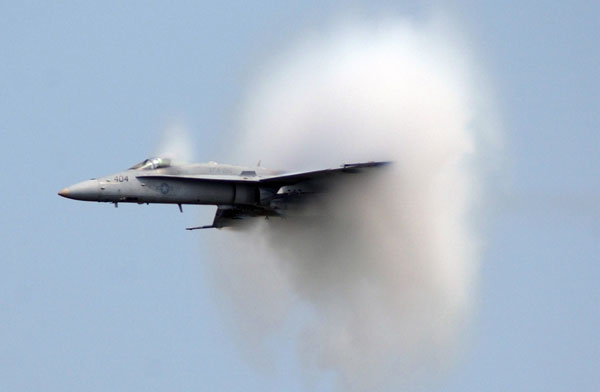NASA, launched QueSST Mission for traveling in record time

[Breaking the sound barrier. Credit to Pixabay]
On January 24th, flight tests for the NASA QueSST Mission commenced at the Armstrong Flight Research Center.
The X-59, the prototype aircraft for the mission, has been in development in the Skunk Works facility in Palmdale, California for 4 years, and is finally ready to fly.
Researchers will be flying the X-59 over several communities to survey people’s reactions to the quiet sonic thump it produces – if they hear anything at all.
Their responses will be shared with regulators, who will then hopefully consider implementing new rules to lift the ban on sonic booms.
The researchers and engineers expect it to achieve ground-breaking results that could change the lives of everyday passengers forever.
Back in 2016, NASA announced its QueSST mission: to achieve silent supersonic flight suitable for commercial travel.
To achieve this incredible feat, NASA collaborated with Lockheed Martin, a renowned global security and aerospace company.
They are widely known as the creator of the world’s fastest plane: the SR-71 Blackbird.
QueSST stands for Quiet SuperSonic Technology and was created with the objective of decreasing the noise caused by the sonic boom, the source of the problem.
A sonic boom is the sound created by an aircraft when it breaks the sound barrier by traveling faster than the speed of sound-also known as supersonic.
When traveling supersonic, the pressure building up on the front end of the aircraft breaks off together in a single shockwave, emitting a sonic boom.
The sonic boom has always been the case for most fighter jets, such as the F-22 Raptor or the F-16.
However, the blaring sound of the 110-decibel sonic boom can be devastatingly loud- possible loud enough sound to shatter car windows on streets below.
This led to the US government banning sonic booms over land in 1973.
Since then, most supersonic travel has only been conducted by the military over large bodies of water.
NASA aims to eliminate this problem through the X-59 and lift this ban.
The X-59 will travel at speeds of up to Mach 1.4 (or 1,715 km), which is fast enough to break the sound barrier.
This is thanks to the engine that the F-16 is equipped with, carrying over 2,500lbs (1,134kg) of weight.
The unique shape of the hull will allow it to break the sonic barrier without building up too much pressure, creating a “sonic bump” of only 75 decibels, instead of the traditional sonic boom.
Researchers are also working on creating photo-imaging technology to capture sound waves.
Therefore, there will be visual evidence of the X-59 “bumping” into supersonic speeds.
Ed Haering, the principal investigator for Schlieren Photography, mentions, “This is all in preparation for X-59. We want to be able to have a proven system to be able to image the shockwaves of the X-59,”
If this project is successful, it will mark another historic milestone in flight, potentially opening a new era in air travel, where “airline passengers might hop on a supersonic jet at breakfast time in Los Angeles to make a lunchtime reservation in New York City.”

- Ian J. Kim / Grade 8
- Asia Pacific International School

![THE HERALD STUDENT REPORTERS [US]](/assets/images/logo_student_us.png)
![THE HERALD STUDENT REPORTERS [Canada]](/assets/images/logo_student_ca.png)
